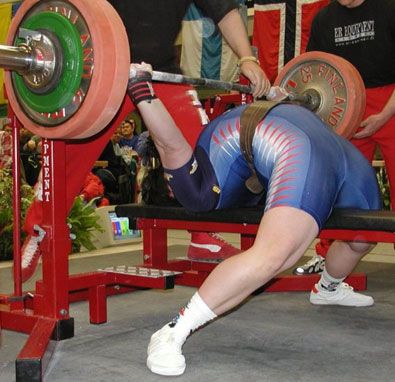We all know the feeling. It’s Monday; it’s just you, your wrist wraps, the bench, the bar, and the plates. So, how much ya bench, bro?
Sorry, I tried to resist, but I just couldn’t. Though the bench press is ever popular among gym-goers worldwide, of the three powerlifts, I would argue that it has by far the most complicated set of rules. There are a wide variety of ways to get your bench press turned down by the judges. Let’s take a closer look to make sure you get three white lights at your next meet.
If you’re looking for information on the best way to bench for powerlifting, rather than information on the rules of how you’re allowed to bench in powerlifting, this is the article for you.
Bench Press at a Meet
We’re going to start with an overview of what happens when you bench at a meet. Then, we’ll work our way down to the specific details piece by piece.
Like the squat, the bench begins when the announcer lets you know: a) you’re up and b) the bar is loaded. As soon as he calls, “the bar is loaded”, you have one minute to get set-up and begin the lift.
You’ll start your set-up by laying down on the bench and unracking the bar. You’re allowed to use a spotter to help on the lift off. However, before you begin actually lowering the bar, you must wait for the “Start!” command.
Once you’ve received the command, lower the bar all the way down to your body. It may touch any part of the body so long as you avoid contact with the belt. If you do not touch your body, you’ve already failed the lift. When the bar is in contact with body, hold it there motionless and wait for the second command, “Press”!
Once you’ve received the press command, drive the bar back up to lockout. Ensure that your elbows are fully extended. Now wait. Before you can return the bar to the rack, you must receive the third and final command — “Rack”!
If you’d like to see a video of this whole process, including an example from a real meet, there will be one at the end of this article.
I’d like to make a couple of important notations here. Many federations do not employ the start command. Some do not even employ the rack command. However, you will ALWAYS be faced with the press command. Again, it is critical that you familiarize yourself with your own federation’s rules.
Technical Rules: Contact Points
Now that you know the general gist of how the benching process works at a meet, you should be aware that the bench press rules begin well before any weight ever gets lifted. Before the judges can begin evaluating whether or not a given press is legal, they ensure the lifter establishes four important points of contact:
- His head is on the bench,
- His shoulders are on the bench,
- His butt is on the bench and
- his feet are on the ground.
If you do not satisfy any one of these conditions, your lift is automatically disqualified.
Again, there are a few important considerations and exceptions that we must point out with regards to some of the rules:
- The feet must be on the ground
In some federations, this rule requires that the entire foot must be as flat as “the shape of the shoe will allow”. Translation: if you have heels or a rounded shoe, that’s fine as long as the bottom surface of the shoe contacts the ground. In other federations, you just need any part of your foot on the ground; it is fine to have the toes touch the floor with the heels up. - The head must be on the bench
This isn’t a universal rule. Some federations do not require head contact with the bench. In nearly every case, these are the same federations that allow for benching with the heels up.
Technical Rules: Grip Considerations
In some powerlifting federations, the grip requirements are fairly stringent. At their most strict, here is the rule set:
-
- The hands must be no greater than ~32” (81cm) apart as marked by the break in the knurling on a standard power bar. These breaks are known as “the power rings”. Your forefingers must be in contact with the rings for your grip width to be legal. All federations enforce this rule.
-
- No reverse-grip benching is allowed. This rule, however, is not universal. A reverse-grip bench is exactly what it sounds like: you grip the bar with your palms facing towards you.
-
- The thumbless grip, also known as the “suicide grip”, is not allowed. Again, this is not a universal rule. This grip is inherently unsafe because deviation from proper form may result in a dropped bar. Some lifters choose to use it anyway. Because the suicide grip is just about one of the only ways to seriously hurt yourself at a meet, several federations simply banned its use.
Technical Rules: Reasons for Disqualification
As I said at the beginning, the bench press rules are comparatively complex. Here are all the ways you can disqualify your bench press attempt:
-
- Ignoring the commands
Remember, you must wait for the start command to begin lowering the bar; you must wait for the press command to begin pressing the bar back up; and, lastly, you must wait for the rack command to return the bar to the racks. If you skip one of these commands, your lift will not count. People often “jump” the commands. They anticipate when the commands will come rather than waiting and responding to them. Timing the commands can actually be a useful skill, particularly on the “Press!” command, but try it at your own peril.
- Ignoring the commands
-
- Changing the position of your head, feet, or butt
If your feet slip and you lose your footing, the lift does not count. If you raise your head at any point during the lift (assuming your federation has this rule), your lift does not count. One of the single most common ways that lifters fail benches presses is by lifting their butt during the press. You can’t do this. Your ass has to stay down. Driving with your feet is important to move heavy weights, but you have to do it in such a way that you do not bridge your hips up in the air. - Failing to go through a full range of motion
Look, if you don’t actually lower the bar all the way to your body, the lift doesn’t count. It is the same thing as squatting high. Additionally, don’t try to be clever and lower the bar to the top of your belt. This isn’t allowed anyone more; someone else thought of it first.
Similarly, you must FULLY lock your elbows out at the top. People often leave a few extra degrees of extension on the table. No federation allows this, but some are more strict than others in terms of actually calling it.
- Changing the position of your head, feet, or butt
-
- Downward movement of the bar during the lift
There are really three separate ways to have the judges call you on this:-
- i) The bar just straight up dips for a second and then you manage to save it somehow.
- ii) One of your arms is stronger than the other and you end up locking out unevenly. First of all, in some federations this is against the rules in and of itself. In others, usually the side that is lagging ends up dropping a bit while the other side is still rising. If there is a downward motion during the lift, even on just one side, the lift doesn’t count.
-
- Downward movement of the bar during the lift
iii) This leads us to “Sinking” and “Heaving”. First of all, sinking the bar into your chest is completely legal.
As long as at some point the bar stops moving, there is no true rule against sinking. However, “heaving” is a different story entirely. Heaving is when a lifter sinks the bar after being given the press command. Remember, any downward motion is already illegal. On top of breaking that rule, the lifter is also defeating the whole purpose of the pause. By letting the bar sink further after the press command, the lifter is able to generate a rebound off of his chest muscles and rib cage via both the stretch reflex and compression of the actual tissues there. As such, heaving is never allowed in any federation.
For an example of heaving, see the video at the end of this article.
The Bench Press “Pause”
In Powerlifting, we often talk about the “paused” bench versus a “touch and go” bench. A touch and go bench is simply a rep where the lifter lowers the bar to their chest and raises the bar back up without any pause at all. They aren’t bouncing the bar off their chest like a guy doing the 225 test for the NFL Combine, but there isn’t ever a point where the bar is motionless, either. There is no federation that I’m aware of that allows the use of a touch and go bench.
However, many of the most prominent federations don’t actually say anything about a “pause” in their rulebook.
From the IPF Rulebook:
…the lifter must lower the bar to the chest or abdominal area (the bar shall not touch the belt), hold it motionless, after which the Chief referee will signal the audible command “Press”…
From the USPA Rulebook:
…the lifter must lower the bar to the chest and hold it motionless on the chest with a definite and visible pause…
From the SPF Rulebook:
The bar must pause on the chest and the lifter must wait for the Head Judge to give the “PRESS” command before beginning moving the bar upward…
From the UPA Rulebook:
…the lifter shall lower the bar to the chest/belly and await the head referees’ signal…The signal shall be an audible command “Press” and given as soon as the bar is motionless on the chest.
Interesting, eh?
If the bar only has to be motionless, well, that can be interpreted as saying that the judge should give the press command as soon as he sees the bar stop moving. This is very different than a rule languaged in such a way that a “clear and definite pause” is necessary. The former allows room for an interpretation where the lifter is given a very quick command. The latter begs the question of what exactly constitutes a “definite” pause? Is it half a second? One second? Two seconds?
In reality, none of this seems to matter. Federations with a reputation for being strict tend to enforce longer pauses regardless of what the rulebook actually says. Likewise, federations which are known for being a bit more lifter friendly, tend to have shorter pauses regardless of what the rulebook says.
Still, be cognizant of how the “pause” is judged in your federation. It might not require a literal pause at all.
If you’d like to hear my take on the politics of the situation and which rule I feel is superior, watch this video:
Bringing it All Together
Like I said, the bench press is easily the most technically complex powerlift in terms of the rules. And, honestly, text is somewhat of a poor format to convey the rules of a sport. If you’re having trouble remembering all of the bench rules, if you prefer to watch rather than read, or if you’d like to see a real world, bench press at a powerlifting meet, please watch the following video:
Like this Article? Subscribe to our Newsletter!
If you liked this articled, and you want instant updates whenever we put out new content, including exclusive subscriber articles and videos, sign up to our Newsletter!
Questions? Comments?
[contact-form-7 id=”3245″ title=”Contact form 1″]
The Guide to Powerlifting Rules: Table of Contents
Part I: Powerlifting Equipment
Part II: Gear
Part III: The Squat
Part IV: The Bench
Part V: The Deadlift
Part VI: Powerlifting Federation Reference Guide
Bonus: How To Pick The Right Federation
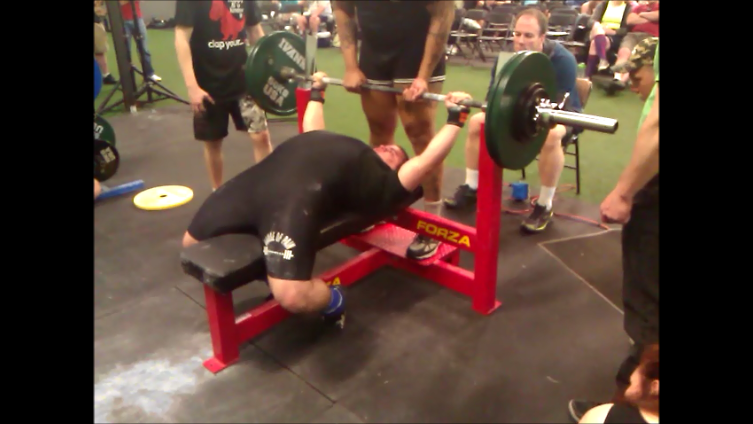

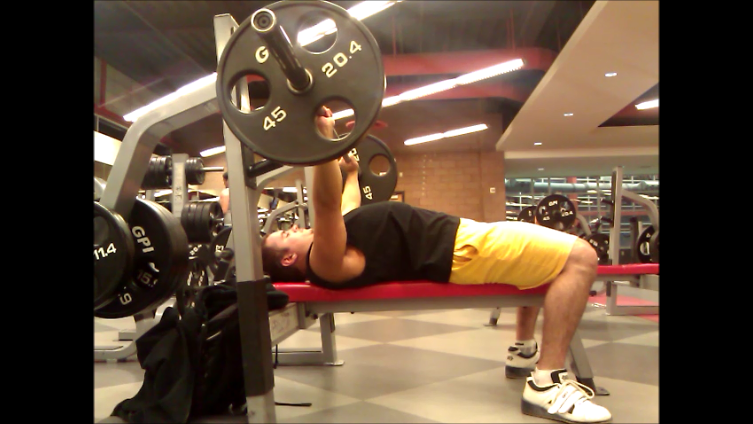

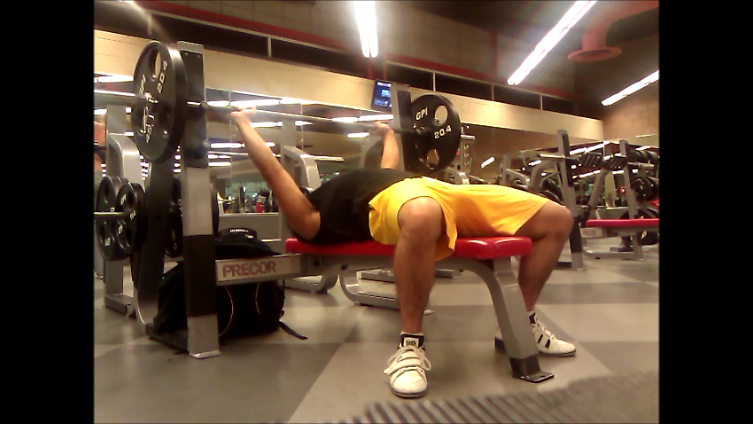
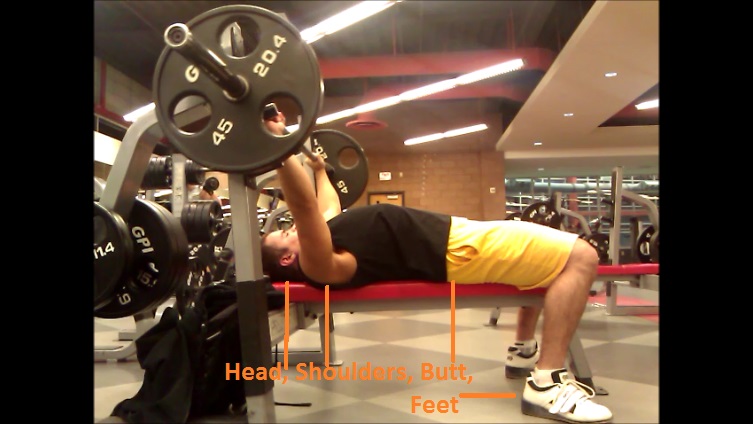
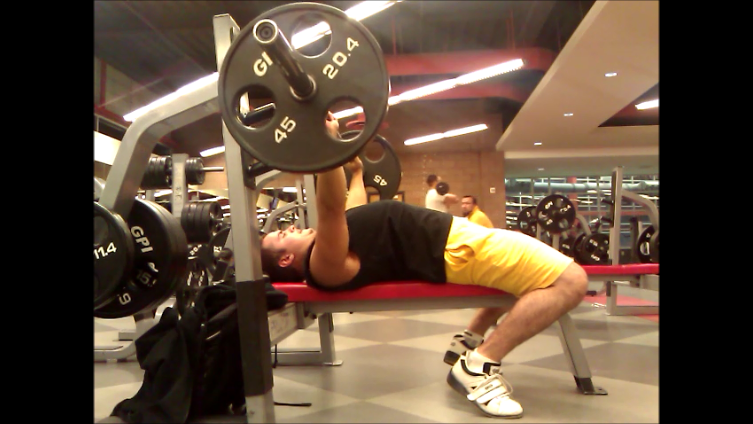
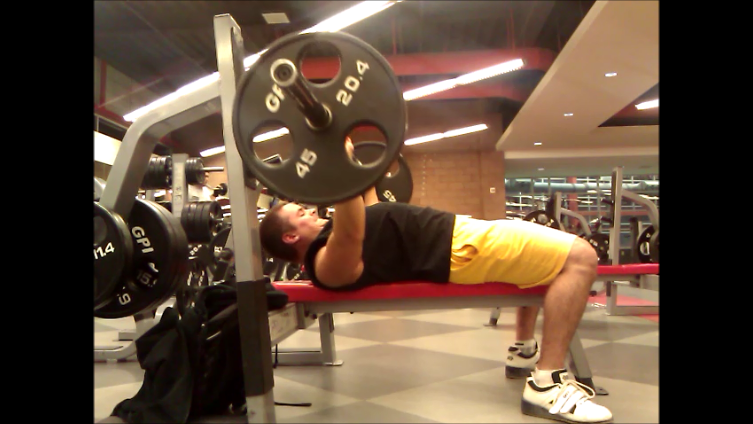

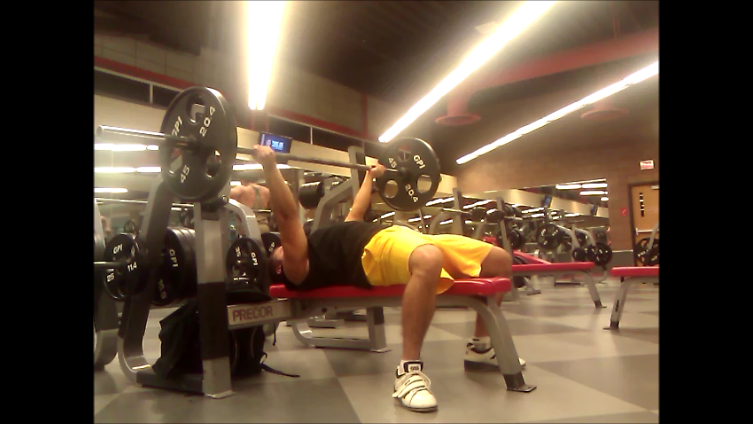

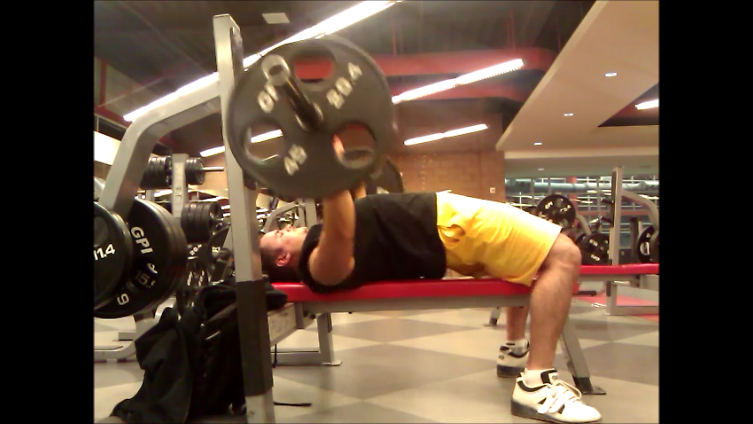
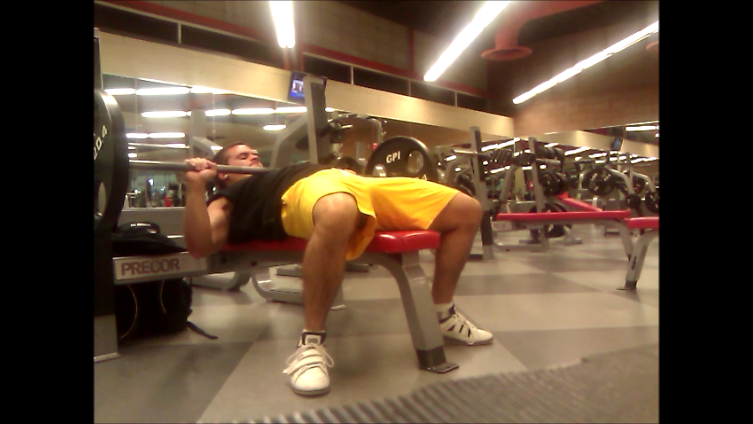
Hey Tom, question about the lifting the butt. When I drive my legs, there is usually some noticeable movement of the hips. At least part of my butt always stays in contact with the bench (or so it feels), but a portion does raise. Would this get redlighted?
http://www.youtube.com/watch?v=s_QpR_LVYzM
Not a chance in the world either of those reps get red-lighted. The biggest issue people have with getting red lights despite having *part* of their ass on the bench is when they have marked visible change from start to finish. Technically, you’re not allowed to change your elected position during the lift. So, if you start with your full ass on the bench and you end up with only the bottom portion still in contact during the initial ascent, you risk red lights. You’re not doing that to any appreciable degree, though. Interestingly enough, if you START with only part of your ass on the bench, and it stays that way, you’re fine.
For example, check out this chick with the best technique ever:
